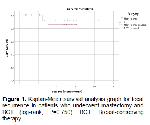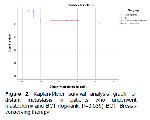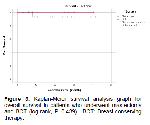BCT is a sensible and attractive option for early-stage breast cancer cases. With the development of chemotherapy regimens, it has become possible to perform BCT after NAC in patients with LABC
13,14. Surgery and adjuvant radiotherapy in addition to NAC have resulted in significant local recurrence and overall survival
15. In recent publications, it is stated that BCT is an oncologically safe surgical option in patients with LABC after NAC
3,16.
In a study conducted to evaluate BCT rates after NAC in 119 cases in which mastectomy was initially the only surgical option, the median age of the patients was 49.6 years (range 26.9-75.9) 17. In another study, da Costa Viera et al. (18) evaluated 78 patients with LABC in terms of surgical results after NAC. The mean age of the patients was 48.8 (range 21.3-75.1) years. The median age of the patients in our study was 44 (range 27-73) years.
In a study by Barranger et al. 17, BCT was performed in 86 (72.3%) of 119 patients. The authors reported that with the use of NAC, there was a significant conversion from mastectomy to BCT among chemosensitive breast cancer cases, and the type of surgery had no effect on local recurrence and survival. Similarly, in our study, we observed that the type of breast surgery (BCT or mastectomy) performed after NAC in patients with LABC did not affect local recurrence, distant metastasis, and overall survival in the survival analysis.
Zhou et al. 19 evaluated eight studies including a total of 3,215 patients with LABC that had undergone NAC and reported the rate of local recurrence as 9.2% in the BCT group and 8.3% in the mastectomy group, indicating no statistically significant difference. In the current study, we observed local recurrence in one patient in both groups, but this did not result in a statistically significant difference between the two surgery groups.
Mauriac et al. 20 performed surgery on 134 patients with LABC after NAC and did not find a significant difference in survival between those who underwent BCT and mastectomy. They argued that in patients with tumors that are initially too large for BCT, NAC followed by BCT could be a gold standard surgical treatment option. They also emphasized that patients should be informed about the possibility of local recurrence. In our study, 48% of the patients underwent BCT, and we did not find any difference in survival between the BCT and mastectomy groups.
Recently, Sisi et al. conducted a prospective study to make patients with LABC suitable for BCT with the use of NAC and to evaluate oncological outcomes 21. BCT was performed on 50 female patients, and no local recurrence was detected during the one-year follow-up. The authors reported that traditional NAC was effective in reducing tumor size and metastatic axillary lymph nodes in patients with LABC, and BCT after NAC was safe in terms of preventing local recurrence.
Similarly, in our study, no local recurrence was observed in the one-year follow-up in the BCT group. However, local recurrence developed in one patient at the 15th month after surgery.
Mashoori et al. 3 conducted a retrospective study to evaluate the oncological results of BCT and mastectomy in 202 patients with LABC who had undergone NAC. They found no significant difference in terms of local recurrence, distant metastasis, and overall survival between patients who underwent BCT and mastectomy. They reported that BCT after NAC was an oncologically safe option in selected patients. Consistently, in our study, no statistically significant difference was found between the patients who underwent BCT and mastectomy in relation to local recurrence, distant metastasis, and overall survival.
The limitations of our study are its retrospective nature, a small number of patients, short follow-up period, and single-center design. Although the oncological data of BCT after NAC in patients with LABC were similar to previous studies, there is a need for prospective studies with a large number of patients and long-term follow-up to make more reliable inferences.
In conclusion, BCT is a surgical treatment that can be safely performed oncologically in selected patients with LABC after NAC. Surgeons can safely perform BCT after NAC in patients who are planned to undergo mastectomy due to the large tumor size.






